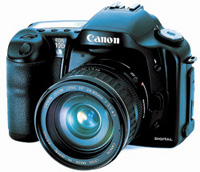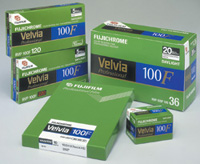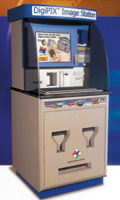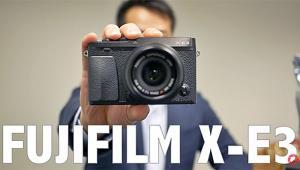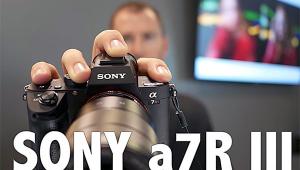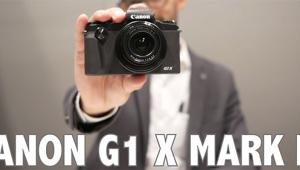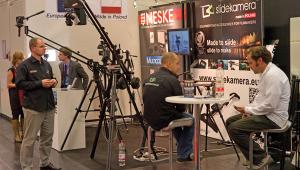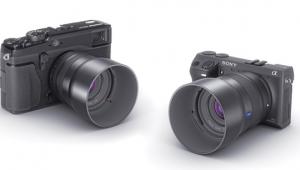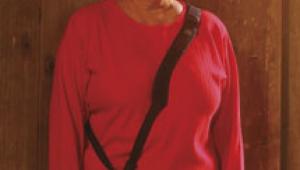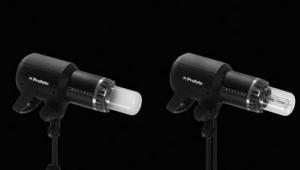Best Of Show
Our Reporters Make Their Top Picks
Fujifilm FinePix
F700 |
|
Canon EOS 10D Canon EOS 10D |
|
Preclick Lifetime Photo
Organizer |
|
Pentax Optio S |
|
A Selection From Various
Categories |
|
For sheer usefulness I think
the Kodak LS-633 digicam's OLED (O for "organic") display
is a long-awaited breakthrough. This display actually allows folks to
see what they shot in broad daylight, and from a very wide viewing angle.
I saw an image from the side in fairly bright light and it was as clear
as if I were looking at it from straight ahead. |
|
Everyone who shoots slides loves Fuji's Velvia film, the color rich chrome that changed the way photographers saw and recorded color. Now that film will be available in an ISO 100 version, doubling the speed of the venerable Velvia 50. Also from Fuji comes a new Astia 100F professional film, the more neutral version yet color rich as well. This film is intended for portrait, fashion, and commercial photographers who need a bit less saturation in their images. For sheer love of film I have to tip my hat to Fujifilm for sticking with it and even improving these glorious emulsions. |
|
Those printing kiosks keep popping up all over the country. These are walk-up workstations that allow you to bring in your CD, digital memory card, or even film and get digital output ranging from prints to other CDs to index prints of all the images you have on your card. There were plenty to choose from at the show (including kiosks from Sony, Polaroid, Kodak, Fuji, etc.). One I especially liked was from Applied Science Fiction, the company that brought us Digital ICE retouching software. This one, dubbed the DigiPIX workstation not only makes copies but also allows you to make the next step with image correction and enhancement. You can remove redeye, control brightness and contrast, and make some impressive color corrections. You can then make prints, dupe your CD, create a CD, and even kick out some enlargements. The digital infrastructure continues to grow. |
|
The importance of carryon luggage is becoming greater for photographers--especially digital photographers. These days its not uncommon to carry your processing gear on your back, somewhat like the wet plate photographers of the 1800s but without the mule and tent, it is hoped. That processor also serves as archiver, special effects generator, and business portfolio in one--you guessed it, a computer. This new way of shooting has engendered a host of accessories and innovations that make working with a digital camera a lot easier. One such product I traveled with and liked is Tamrac's 5259 Backpack. The backpack was perfect for carrying a laptop and 35mm and digital SLR equipment. The main compartment is completely foam padded and was large enough to carry a pro-sized digital SLR with a 200mm zoom lens attached, several additional lenses, and even another camera body. The laptop remained protected in a separate, foam-padded compartment in the rear that allows quick access, a handy thing when you're about to get inspected at the airport. Under the front flap is a zippered pocket for personal items and an open pocket for files or tickets. A large zippered accessory pocket held all those wires and cords that are part of the traveling gear today. The backpack fit in the overhead compartment, and sure makes the one carryon bag restriction easier to satisfy. |
|
Although there were a host
of amazing gizmos and gadgets at the show my choice for the most fun product
was Brandess-Kalt-Aetna Group's My Little Photobobble-Heads. My
Little Photobobble-Heads statues have face frames that can be personalized
with your favorite little or big kid's photograph. "Just place
it in the frame and watch them bobble in a 7" tall, heavy poly-resin
constructed bobblehead statue. Choose from a tennis, baseball, basketball
(African American or Caucasian), football, hockey, soccer girl, soccer
boy, fireman, or policeman," said the press information. Who needs
Photoshop when a product like this can bring so much fun to photography? |
- Log in or register to post comments

